Research & Publications
Constantly updated links to nationally and internationally acclaimed publications in indexed journals
Several changes in normal pressure dynamics on the brain occur with a decompressive craniectomy and subsequent cranioplasty. Dead space volume is an important factor contributing to intracranial volume postcranioplasty. A decrease in this volume due to negative suction drain along with relative negative pressure on the brain with the loss of external atmospheric pressure may lead to fatal cerebral edema.
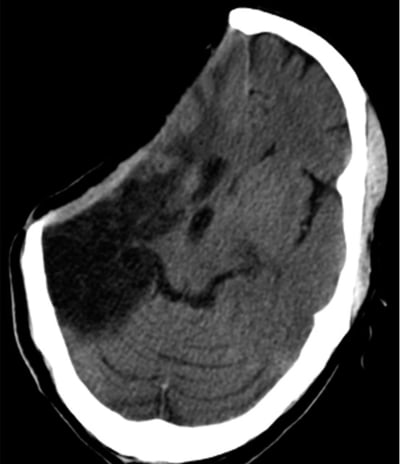

Theco-thecal bypass technique was envisaged to achieve a long lasting zero net pressure difference via free flow of cerebrospinal fluid above and below the level of spinal subarachnoid adhesions with minimal handling of the spinal cord and avoidance of extensive adhesiolysis that is associated with a high rate of re-adhesions and failure. This surgical technique involves a valve-less shunt conduit connecting the subarachnoid space above and below the level of adhesions and thereby abolishing the trans-mural pressure gradient causing the syringomyelia, leading to a drastic clinical improvement, as elaborated in this case report.
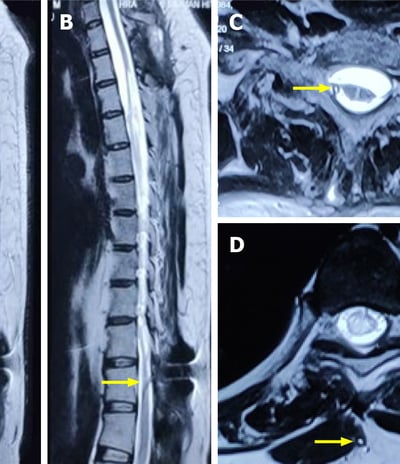

A novel proposition that the neurogenic inflammation of the facial nerve trunk caused by its proximity to the dilated posterior auricular/stylomastoid/occipital and superficial temporal arteries during a migraine attack leads to a temporary LMN type of paresis of the muscles supplied by the facial nerve.


A continuous lumbar CSF drainage procedure can upset the pressure dynamics of the atmosphere versus intracranial pressures to a point of fatal clinical deterioration and hence needs to be closely monitored. Our case report speaks of persistent brain herniation in which drainage of CSF led to a trephination syndrome, which was reversed once again, by measures to increase CSF production and intracranial pressure.
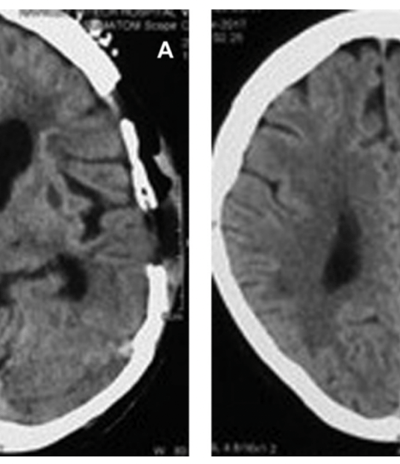

Craniovertebral junction (CVJ) hydatid disease although rare, forms an important differential diagnosis of CVJ bony pathologies, especially in endemic areas due to the sheer volume of cases presented there. The authors report a rare case of CVJ hydatid disease mimicking a bony expansile tumor on imaging. in tropical regions, hydatid disease of the cervical spine should be considered in the differential diagnosis of patients presenting with high cervical compressive myelopathy, especially when associated with fever.
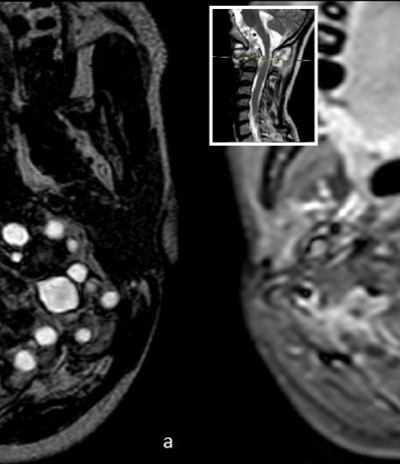

Phosphaturic mesenchymal tumors cause renal phosphate wasting leading to hypophosphatemia manifesting as bone pain and fractures. About 95% of these tumors involve the extremities and the appendicular skeleton, with spinal tumors being exceedingly rare. We describe a case of non-compressive quadriparesis, caused by a thoracic vertebral body phosphaturic mesenchymal tumor.
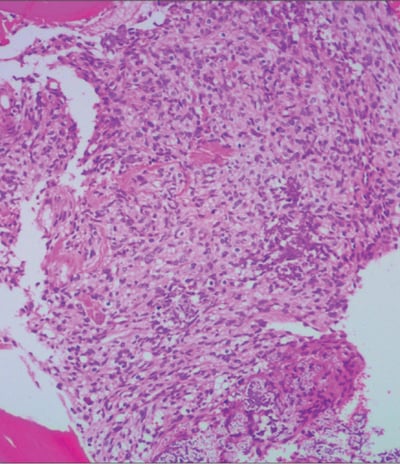

"Cannon Ball Bleeds" in the Brain Following Tenecteplase Thrombolysis in Myocardial Infarction
Multiple round shaped metastatic lesions of various sizes are described in the lung and brain in context with malignancy as cannon balls, multiple bleeds of similar morphology have not yet been described. We describe a 72-yr-old gentleman who suffered from such bleeds after thrombolysis for his acute myocardial infarction and discusses the possible causes.
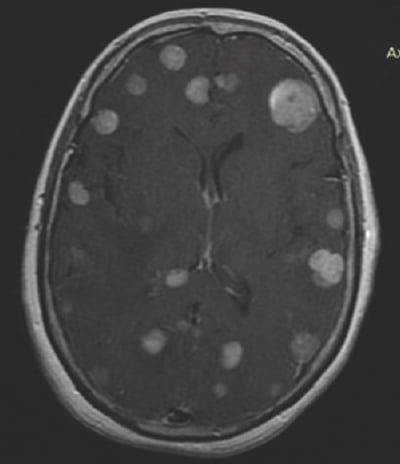

Contact Us
We would love to hear from you!
For appointments kindly use the Consult portal.
Email: drmrudulbhatjiwale@gmail.com
Phone: +91-9591129929
© Mrudul Bhatjiwale 2025. All rights reserved.